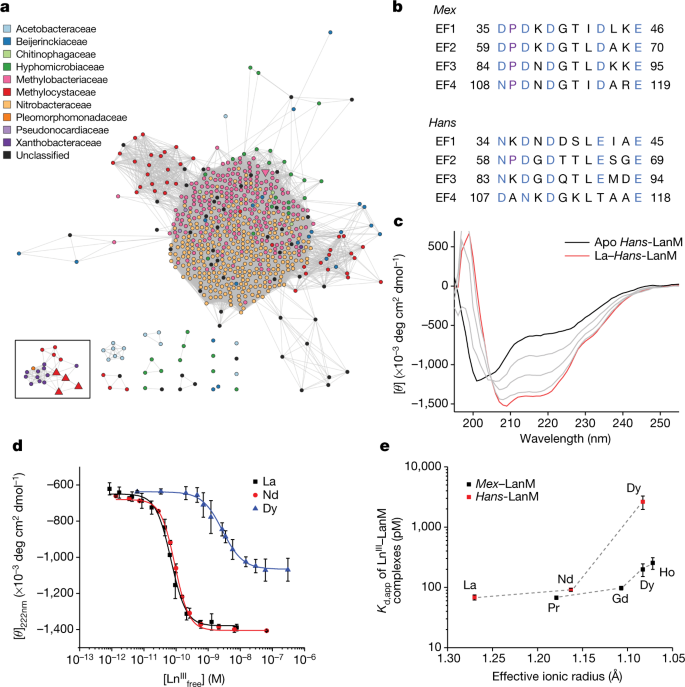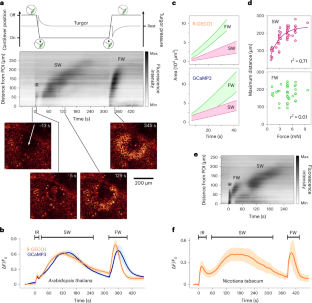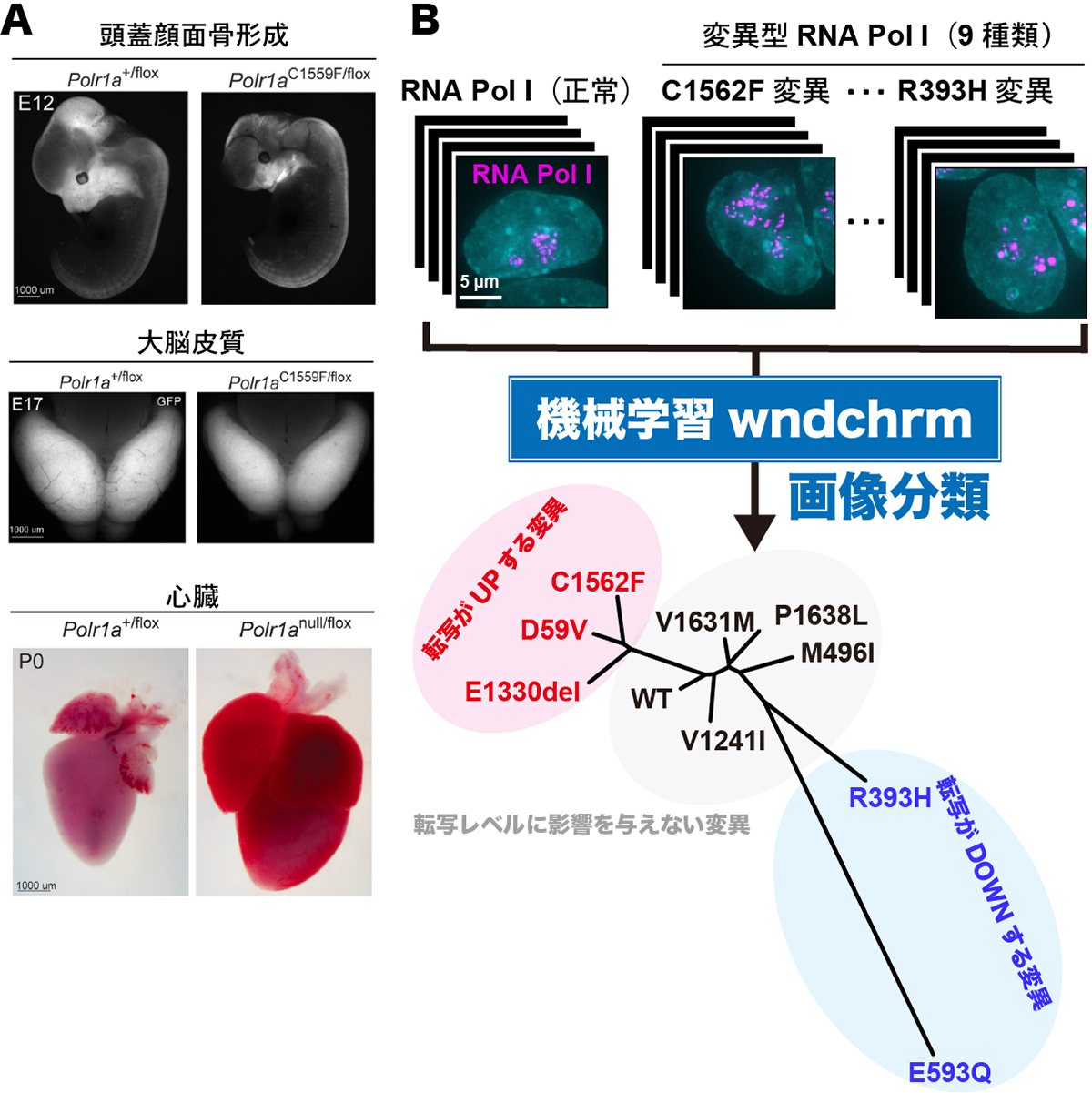2023-05-31 ペンシルベニア州立大学(PennState)
◆希土類元素は、現代のほとんどの技術、スマートフォンからハードドライブまで、ほとんどすべてに必要な成分ですが、地殻や互いから分離するのは非常に困難です。従来の分離方法では、大量の有毒な化学物質(ケロシンやホスホン酸塩など)を使用し、数十から数百のステップを経て高純度の希土類酸化物を得る必要があります。この新しいメカニズムにより、希土類元素を迅速かつ効率的に分離できるようになりました。
◆この研究により、希土類の回収と分離に関する新たなアプローチが示され、テクノロジーセクター全体における効率的で環境に優しい採掘とリサイクルの実現が期待されます。将来的には、希土類の分離がより容易になり、貴重な地球資源を効果的に活用できる可能性があります。
<関連情報>
- https://www.psu.edu/news/research/story/protein-mines-sorts-rare-earths-better-humans-paving-way-green-tech/
- https://www.nature.com/articles/s41586-023-05945-5
金属感受性のランモジュリン二量体を用いてレアアースの分離を促進することに成功 Enhanced rare-earth separation with a metal-sensitive lanmodulin dimer
Joseph A. Mattocks,Jonathan J. Jung,Chi-Yun Lin,Ziye Dong,Neela H. Yennawar,Emily R. Featherston,Christina S. Kang-Yun,Timothy A. Hamilton,Dan M. Park,Amie K. Boal & Joseph A. Cotruvo Jr
Nature Published:31 May 2023
DOI:https://doi.org/10.1038/s41586-023-05945-5

Abstract
Technologically critical rare-earth elements are notoriously difficult to separate, owing to their subtle differences in ionic radius and coordination number1,2,3. The natural lanthanide-binding protein lanmodulin (LanM)4,5 is a sustainable alternative to conventional solvent-extraction-based separation6. Here we characterize a new LanM, from Hansschlegelia quercus (Hans-LanM), with an oligomeric state sensitive to rare-earth ionic radius, the lanthanum(III)-induced dimer being >100-fold tighter than the dysprosium(III)-induced dimer. X-ray crystal structures illustrate how picometre-scale differences in radius between lanthanum(III) and dysprosium(III) are propagated to Hans-LanM’s quaternary structure through a carboxylate shift that rearranges a second-sphere hydrogen-bonding network. Comparison to the prototypal LanM from Methylorubrum extorquens reveals distinct metal coordination strategies, rationalizing Hans-LanM’s greater selectivity within the rare-earth elements. Finally, structure-guided mutagenesis of a key residue at the Hans-LanM dimer interface modulates dimerization in solution and enables single-stage, column-based separation of a neodymium(III)/dysprosium(III) mixture to >98% individual element purities. This work showcases the natural diversity of selective lanthanide recognition motifs, and it reveals rare-earth-sensitive dimerization as a biological principle by which to tune the performance of biomolecule-based separation processes.


